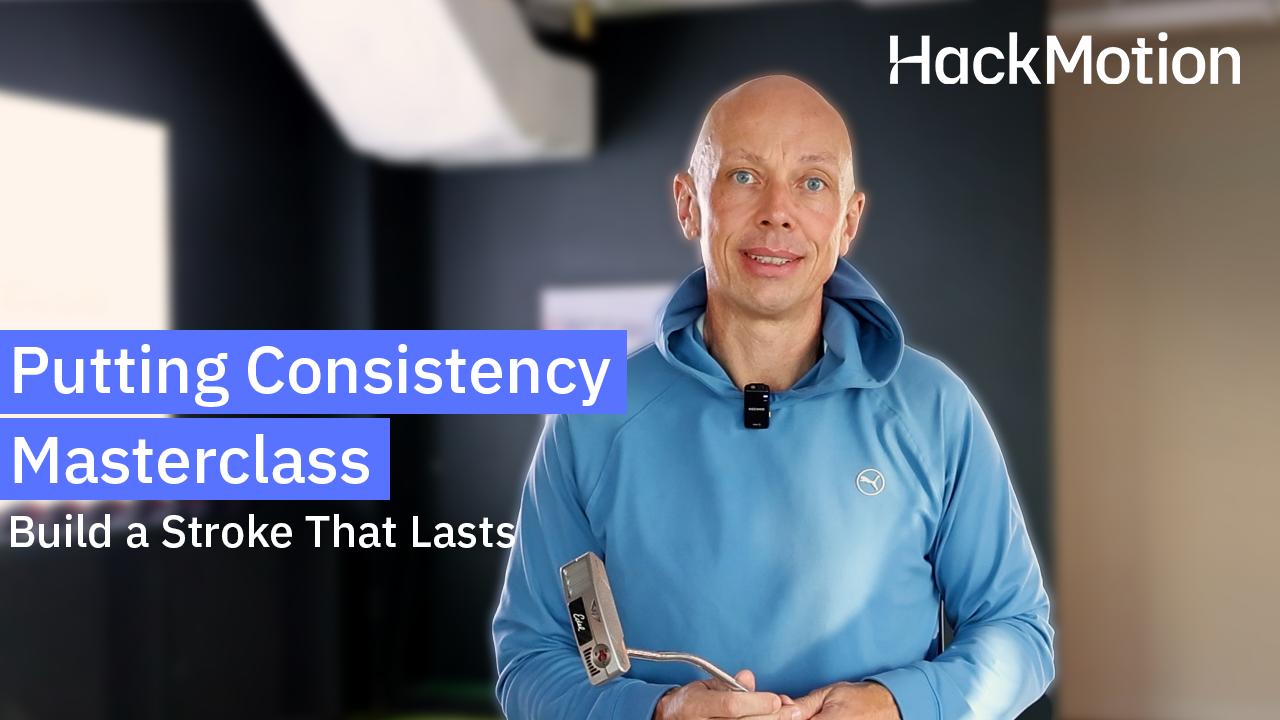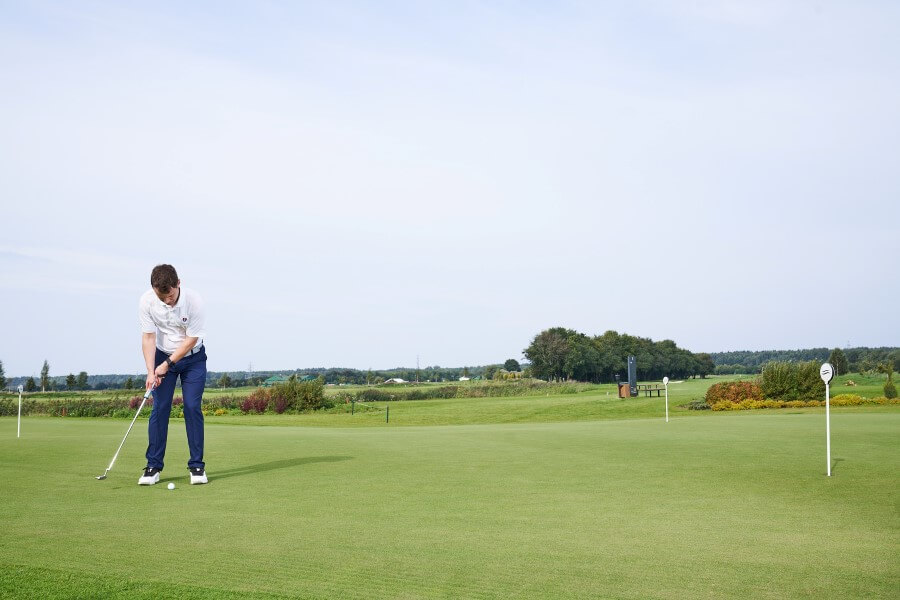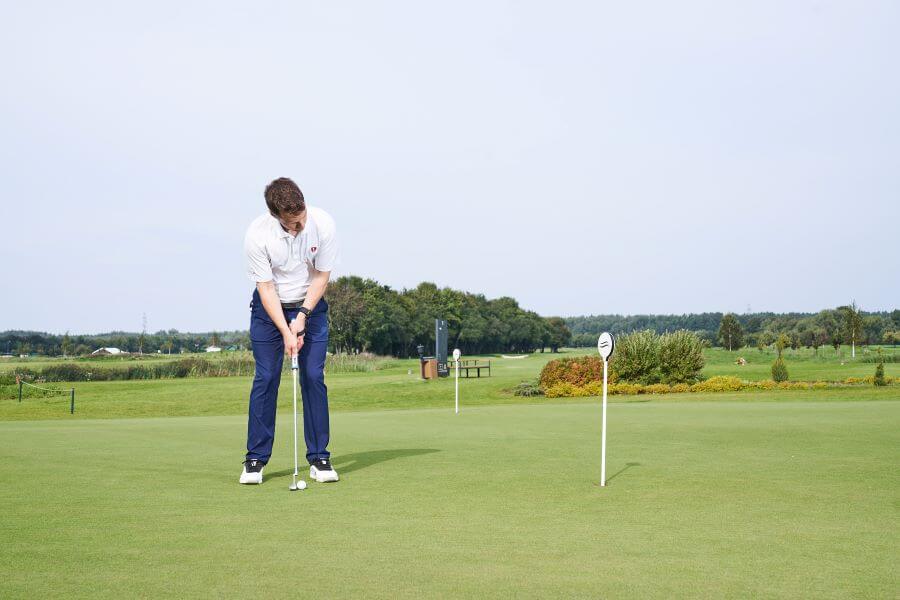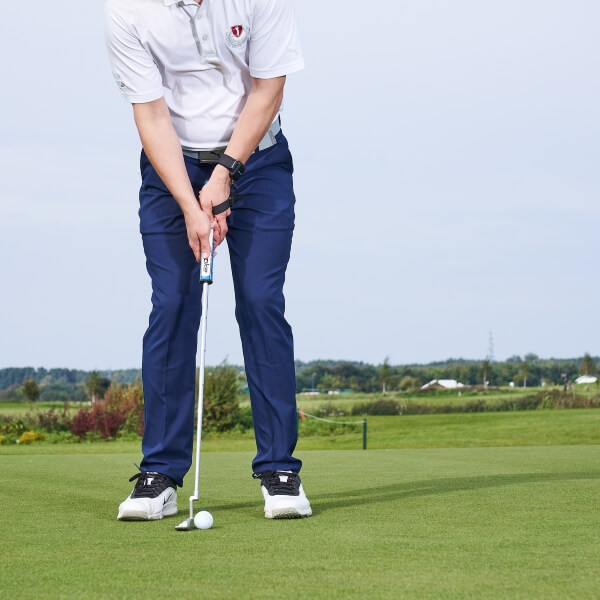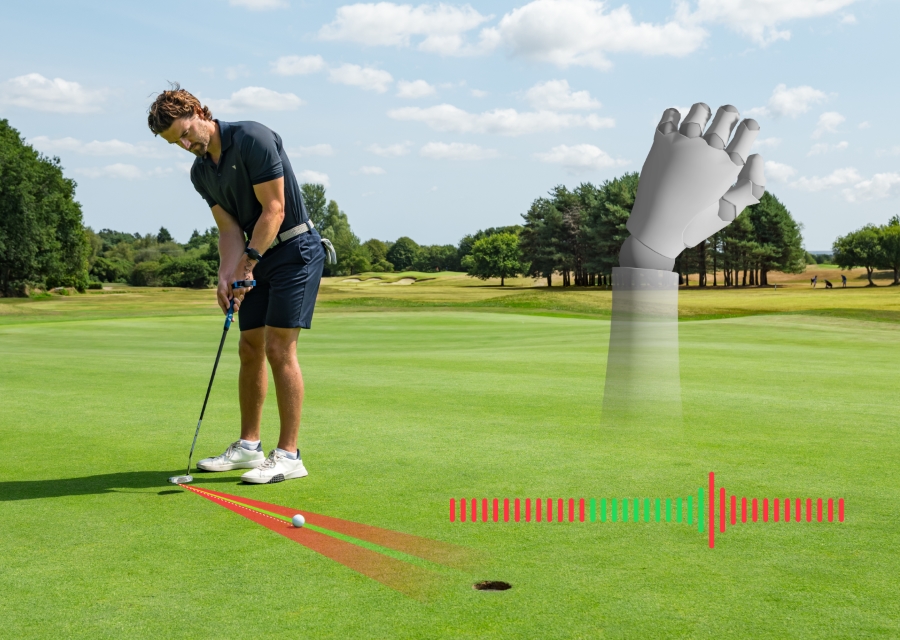How to Stop 3 Putting in Golf: 8 Practical Tips & Drills to Sink More 2 Putts
You crush a drive, stick your approach on the longest par 4, and leave yourself a 25-footer for birdie.
Confidence is high until you roll it six feet past and miss the one coming back. Suddenly, what felt like a great hole turns into a bogey.
We’ve all been there. The dreaded 3-putt doesn’t just hurt your scorecard—it rattles your confidence.
The good news? With the right approach, you can turn those frustrating 3-putts into consistent 2-putts (and even sneak in more 1-putts along the way).
How to Stop 3 Putting: (Key Takeaways)
If you don’t have the time to read all of my recommendations for turning a 3 putt into a 2 putt, here are the key pieces of information that you should take away.
- Your putting stroke is potentially less important than your aim, alignment, and distance control; putting strokes will vary slightly; make sure you know where to hit your putts.
- Practicing 3 and 4-foot putts gives you more confidence on your longer putts.
- For difficult greens, it can make sense to lay up and plan a chip and one putt; leaving yourself 50 feet from the cup is a recipe for a 3 putt.
- Visualization and a pre shot routine are needed for putts of ANY length.
Contents
8 Tips to Stop 3 Putting and Make More 2 Putts
Do you know how hard it is to hit a green in regulation? Not only do you have to hit a drive that is relatively straight, you have to follow it up with an accurate approach shot.
If you have managed to do both of these things (on par 4’s and 5’s), it seems like a birdie or par is certainly in the cards for you.
However, many golfers struggle with 3 putting, and it’s one of the biggest confidence killers on the course.
Here are 8 tips to help you stop 3 putting and take your game to the next level.
1. Become a 3-Foot Expert
One of the best strategies to eliminate 3-putts is to become an expert from the 3-foot range. If every putt inside 3 feet felt automatic, it would be much easier to approach longer putts with confidence.
There are no true gimmies in golf, but the 3-foot putt can be practiced enough to feel nearly guaranteed. Work on these putts every day, whether on a putting mat at home, a strip of carpet, or the practice green.
Develop a routine, a reliable swing thought, and a consistent putter face angle that makes this short putt repeatable.
Will every single one drop? Absolutely not. But becoming more consistent inside 3 feet gives you a far better chance of walking off each green with a 2-putt or better.
2. Make Your Wrist Movements More Consistent
Wrist movement in putting can be a bit of a tricky thing. The problem with the wrists in the putting stroke is that most golfers believe the wrists have to stay completely still from one stroke to the next.
Even professionals are not able to do that. There is always a bit of variation and inconsistency in the stroke.
The key is to make your wrist movements as consistent as possible.
For some golfers, this includes a large arc in their putting stroke, and others try to keep the putter head completely square for the entire stroke.
With HackMotion, you can measure the exact movement in your putting and decide where your weaknesses are. The key is to focus on a method that lets you stay consistent.
Let’s face it: each green and each putt is different. This creates a lot of variability in golf. If your wrist action can remain consistent, you should make better putts (and certainly less 3 putts).
3. Invest in Some Technology
In addition to tools like HackMotion, which help measure your putting stroke and ensure your wrists are working consistently, green-reading apps can also be valuable.
These apps aren’t legal in tournament play because they provide too much detail about slopes and break. However, as a training tool, they’re extremely useful. They highlight slopes and zones on the green, making it easier to see where your putt should start and finish.
Many amateur golfers step up to a long putt thinking, “Just get it close.” In reality, these putts should be read carefully so they finish within 3 feet of the hole.
If you already use launch monitors, rangefinders, and other gadgets, consider adding HackMotion and green reading apps to help bring everything together.
4. Learn Aim to a Spot
Stop aiming at the hole!
Very few of the putts that you take during the course of a round should be aimed directly at the hole. If you continually aim to the hole, expect to miss putts almost all the time.
When you aim your putt, you have to choose a spot and then commit to that spot.
You may be subconsciously pulling or pushing your ball toward the cup during your putting stroke. If you know that a putt breaks three feet to the left, get yourself set to that spot and hit it there.
This concept is harder than you may realize because we naturally want the ball to go in the hole. If you can start trusting the spot you chose, your ball will end up much closer to the hole!
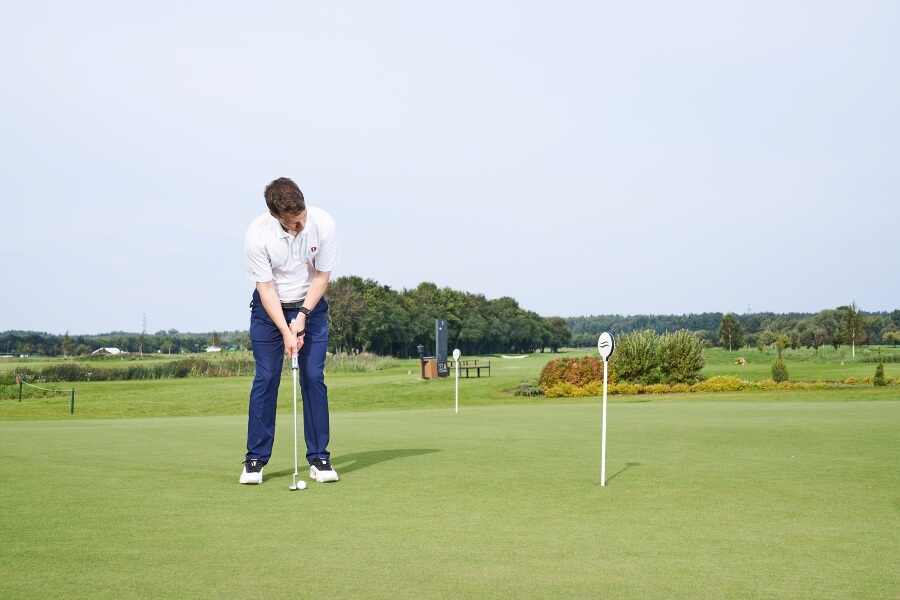
5. Practice Lag Putting before Each Round
Most golfers warm up by tossing a few balls down and hitting 6–15 footers. You might drain a couple of 12-footers, feel good, and head to the first tee.
Next time, flip that routine. Start with the long putts:
- Place a ball on one side of the green and putt it to the farthest hole location.
- Use just one ball, then walk up and try to finish the hole in two putts.
- Repeat by working your way back across the green 5–7 times.
This forces you to get a feel for speed across the entire putting surface—not just the mid-range. The more you practice lag putting, the easier it becomes to avoid those dreaded 3-putts.
6. Establish a Pre-Putt Routine
Before every putt, follow a consistent process to calm nerves and improve focus. A simple routine might look like this:
- Walk the putt – Circle around and read the break from both sides.
- Practice strokes – Take a few rehearsals, focusing on smooth and consistent wrist movement.
- Pick your spot – Commit to an exact target, not just the hole.
- Add a swing thought – Something simple, like “smooth tempo” or “quiet wrists.”
- Execute – Step in with confidence and roll the putt.
Every player’s pre-putt routine will look a little different. Watch how the pros handle theirs, then adapt pieces that fit your game.
7. Visualize Each Putt
If you look at a 15-foot putt with a 2 foot break, there is more than one line that you can take to the hole. You can hit it a little firmer and take some break out, or you can hit it softly and let it break towards the club slowly.
In your mind, you need to picture exactly what your putt is going to look like. It should be something you can visualize and see, and you should do it with every putt.
As I mentioned, many amateur golfers just try to get their first putt close instead of going through the proper steps and mastering the pre-shot routine.
8. Think the Right Way
Finally, this is one of the putting tips that has made the biggest difference in my game: learning to think positively. The second you stand over a putt and say to yourself, “don’t 3-putt,” you’ve already planted a negative thought.
Instead, pick a clear spot where you want the ball to roll, commit to it, and remind yourself that you’re a solid putter who makes putts like this all the time.
Shifting your mindset from fear of missing to confidence in execution can completely change how you perform on the greens.
The Best Golf Drills to Help You Stop 3 Putting
One of the best ways to help make more one and two putts is to work on some drills. Here are a few of the best distance control putting drills for golfers.
Train smarter at home—putting, short game, and full swing. Start with these putting drills to practice at home, then expand your routine with our full guide on how to practice golf at home.
Ladder Drill (Touch & Capture Speed)
Build precise feel so your first putt stops inside tap-in range instead of racing or dying at the hole.
The goal is to hit each ball slightly farther than the last without running out of space.
Ladder Drill – Step by Step
- Set the zone: From your start point, pace 3 steps and place an alignment stick/tee; pace 3 more steps and place a second stick/tee to create a lane.
- Ball #1: Putt to finish just inside the front edge of the lane. Mark the finish with a tee/coin.
- Progress: Each new putt must finish past the previous mark but inside the back stick.
- Score it: Your turn ends if a ball comes up short of the last mark or runs past the lane.
- Make it harder: Narrow the lane, increase/decrease the distance, or reverse the drill (start long, work back shorter).
Heads-Up Putting (Speed Calibration)
Use your eyes to teach your brain the correct stroke length for the distance.
The goal here is to Improve distance control by referencing the target during your rehearsal and sometimes during the stroke.
- Video Timestamp: 5:46
Heads-Up Putting Drill – Step by Step
- Rehearsal eyes-up: Stand beside the ball and make 2–3 practice strokes while looking at the hole, matching stroke size to the putt length.
- Option A (confidence play): Keep your eyes on the hole during the actual stroke and simply recreate your rehearsal tempo.
- Option B (blended): Take your last look at the hole, return eyes to the ball, and immediately roll the putt same length/tempo as rehearsal.
- Vary distances: Work short, mid, and long putts so your brain stores multiple “speed templates.”
- Why it works: Your internal “throwing” instincts kick in, tightening dispersion on long and mid-length putts.
HackMotion Wrist-Stability Drill (Consistent Strike = Predictable Roll)
Small wrist changes can add loft/bounce, making distance control erratic. Use HackMotion to keep your wrist action consistent from setup to impact.
In this drill you’ll stabilize lead-wrist movement so launch/roll is repeatable on short, mid, and long putts.
HackMotion Putting Flexion / Extension Drill
Get a feel for the wrist movement that controls your putter’s loft.
HackMotion Wrist-Stability Drill – Step by Step
- Baseline (short putt): Wear HackMotion on your lead wrist. Hit 5 short putts, noting your typical pattern (you’ll see small flex/extend changes perfectly normal).
- Match setup & impact: On the next 10 short putts, aim to return the lead wrist at impact similar to setup (minimize extra “add-loft” motion). Use HackMotion audio feedback to stay inside a tight band.
- Scale the stroke: Move to double the distance. Expect a bit more wrist motion in the backswing; focus on re-matching impact to setup with the audio cue.
- Pressure reps: Make a 9-ball ladder (3 short, 3 mid, 3 long). Your only goal: same wrist feel at impact on all nine.
- Track wins: When your impact readings are steady, you’ll notice cleaner strike and more predictable rollout.
Summary
The best thing about eliminating 3 putts is that it will have a profound and immediate impact on your scoring.
If you feel as though your scores don’t accurately represent how good of a ball striker you are, it’s like because of the dreaded 3 putt.
Implementing these tips and practice routines can make all the difference in your ability to play great golf.
